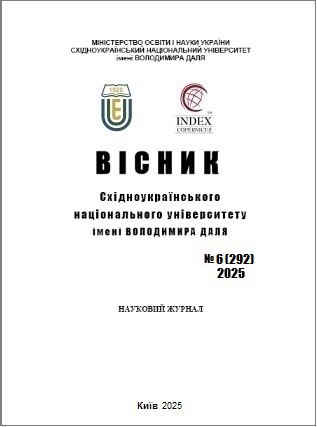Аnalysis of the efficiency of labor potential of educational services enterprises for IT
DOI:
https://doi.org/10.33216/1998-7927-2025-292-6-35-41Keywords:
labor potential, IT enterprises, labor productivity, motivationAbstract
The article investigates the effectiveness of using the labor potential of educational services enterprises for the IT sphere in the conditions of a transformational economy. The relevance of the topic is due to the need to adapt personnel management systems to dynamic changes in the business environment and growing requirements for the quality of human capital. The components of labor potential are identified, which include not only professional and educational characteristics, but also psychophysiological, socio-motivational, cultural and spiritual aspects.
Particular attention is paid to the concept of dynamic personnel capabilities, which are considered as the basis for the strategic development of the enterprise, its competitiveness and sustainability. Scientific approaches to assessing personnel potential are identified and the absence of a holistic assessment system and structural model of dynamic capabilities in modern research is emphasized.
The practical part of the article is devoted to the analysis of LLC “SKIL AP” based on labor productivity indicators, average monthly salary and advance rate. An analysis of labor productivity indicators, average monthly wages and the advance coefficient was conducted using the example of LLC SKIL AP for 2019–2023, which revealed disparities between the growth rates of wages and productivity. The forecast for 2024 showed a trend towards a decrease in the advance coefficient, which indicates the need to intensify personnel policy. Based on forecast calculations, a conclusion was made about a trend towards a decrease in the efficiency of using labor potential in the future.
The implementation of a systematic approach to labor potential management, which is based on a dynamic analysis of personnel needs, the development of internal and external competencies and the formation of a motivational environment, is proposed. This will ensure the sustainable development of IT enterprises in the field of educational services and strengthen their competitiveness.
It is concluded that effective human resource management in the IT sector is a critical factor in adapting to changes and forming stable positions in the national economic environment.
References
1. Виноградова В. Є., Петровська О. В. Психологічні аспекти підбору персоналу в ІТ-сфері // ІТ-право: проблеми і перспективи розвитку в Україні : матеріали наук.-практ. конф. (Львів, 18 листопада 2016 р.). Львів : НУ «Львівська політехніка», 2016. С. 324–329.
2. Баранцева С. М., Бокова О. В. Трудовий потенціал підприємства: теоретичний аспект // Торгівля і ринок України : зб. наук. праць. 2010. Т. 2, вип. 30. С. 220–225.
3. Helfat C. E., Peteraf M. A. Managerial cognitive capabilities and the microfoundations of dynamic capabilities // Strategic Management Journal. 2015. Vol. 36, No. 6. P. 831–850. DOI: https://doi.org/10.1002/smj.2247.
4. Razvadovskaya Y., Kapluk E., Rudneva K. Assessment of the potential of dynamic capabilities of companies in the mining sector // Proceedings of the 19th International Multidisciplinary Scientific GeoConference SGEM 2019 (June 30 – July 6). 2019. Vol. 19(1.3). DOI: https://doi.org/10.5593/sgem2019/1.3/S03.010.
5. Khoreva V., Wechtler H. HR practices and employee performance: The mediating role of wellbeing // Employee Relations. 2018. Vol. 40, No. 2. P. 227–243. DOI: https://doi.org/10.1108/ER-08-2017-0191.
6. Arend R., Bromiley P. Assessing the dynamic capabilities view: spare change, everyone? // Strategic Organization. 2009. Vol. 7, No. 1. P. 75–90. DOI: https://doi.org/10.1177/ 1476127008100132.
7. Kok R. A. W., Ligthart P. Differentiating major and incremental new product development: the effects of functional and numerical workforce flexibility // Journal of Product Innovation Management. 2014. Vol. 31, Suppl. 1. P. 30–42. DOI: https://doi.org/10.1111/jpim.12190.
8. Vovk O., Panchoshna T., Sirivlya T. Формування кадрового потенціалу авіапідприємства: структурний підхід // Інфраструктура ринку. 2020. Вип. 39. С. 149–154. URL: http://www.marketinfr.od.ua/journals/2020/39_2020_ukr/26.pdf.
9. Tereshchenko E., Shkolenko O., Kosmidailo I., Kalina I., Shulіar N. Формування ефективної системи ризик-менеджменту на підприємстві // Financial and Credit Activity Problems of Theory and Practice. 2021. No. 1(36). P. 320–329. DOI: https://doi.org/10.18371/fcaptp.v1i36.227924.

